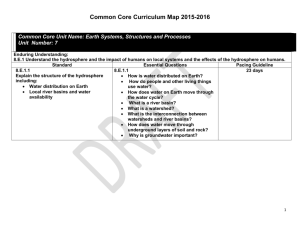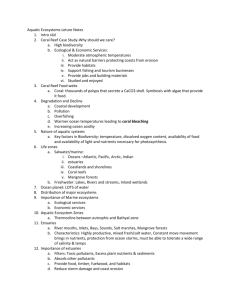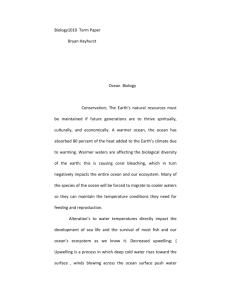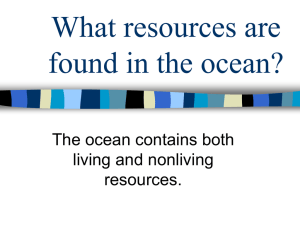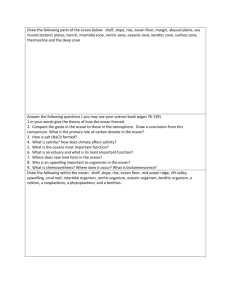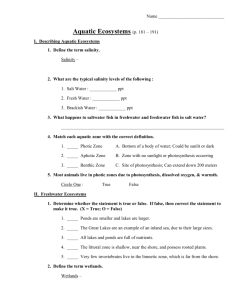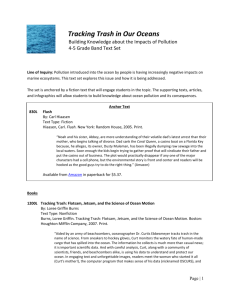Common Assessment #1 Study Guide
advertisement
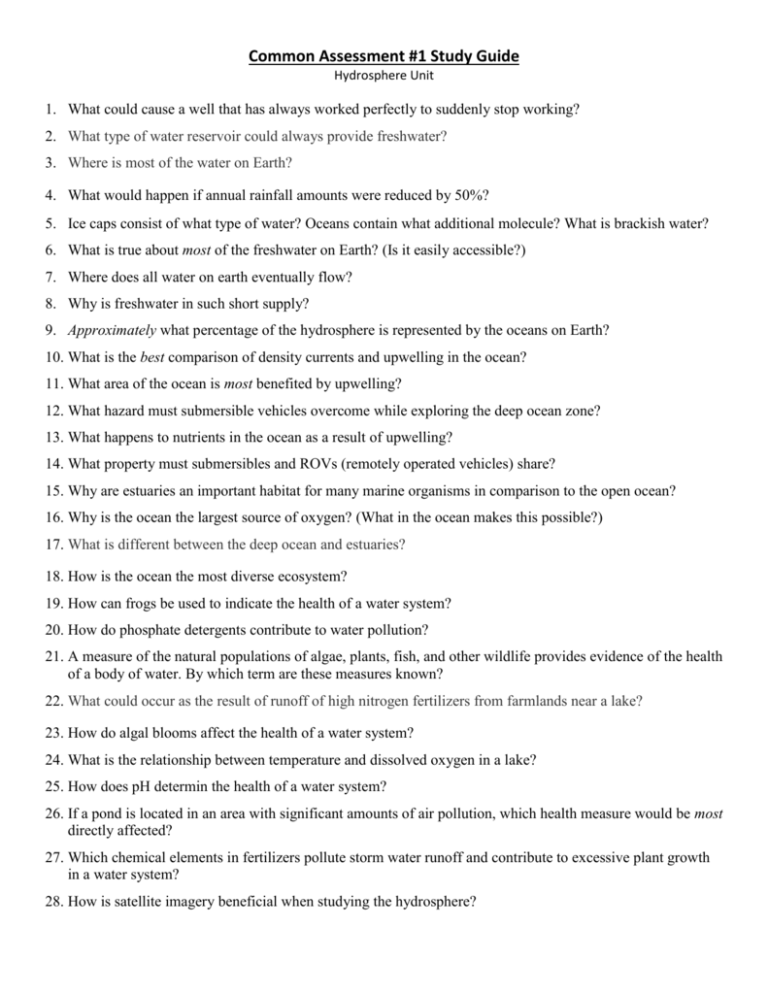
Common Assessment #1 Study Guide Hydrosphere Unit 1. What could cause a well that has always worked perfectly to suddenly stop working? 2. What type of water reservoir could always provide freshwater? 3. Where is most of the water on Earth? 4. What would happen if annual rainfall amounts were reduced by 50%? 5. Ice caps consist of what type of water? Oceans contain what additional molecule? What is brackish water? 6. What is true about most of the freshwater on Earth? (Is it easily accessible?) 7. Where does all water on earth eventually flow? 8. Why is freshwater in such short supply? 9. Approximately what percentage of the hydrosphere is represented by the oceans on Earth? 10. What is the best comparison of density currents and upwelling in the ocean? 11. What area of the ocean is most benefited by upwelling? 12. What hazard must submersible vehicles overcome while exploring the deep ocean zone? 13. What happens to nutrients in the ocean as a result of upwelling? 14. What property must submersibles and ROVs (remotely operated vehicles) share? 15. Why are estuaries an important habitat for many marine organisms in comparison to the open ocean? 16. Why is the ocean the largest source of oxygen? (What in the ocean makes this possible?) 17. What is different between the deep ocean and estuaries? 18. How is the ocean the most diverse ecosystem? 19. How can frogs be used to indicate the health of a water system? 20. How do phosphate detergents contribute to water pollution? 21. A measure of the natural populations of algae, plants, fish, and other wildlife provides evidence of the health of a body of water. By which term are these measures known? 22. What could occur as the result of runoff of high nitrogen fertilizers from farmlands near a lake? 23. How do algal blooms affect the health of a water system? 24. What is the relationship between temperature and dissolved oxygen in a lake? 25. How does pH determin the health of a water system? 26. If a pond is located in an area with significant amounts of air pollution, which health measure would be most directly affected? 27. Which chemical elements in fertilizers pollute storm water runoff and contribute to excessive plant growth in a water system? 28. How is satellite imagery beneficial when studying the hydrosphere? 29. Which chemical substance is used in a sewage treatment system to kill harmful bacteria? How can this be done without chemicals? 30. List three behaviors that best demonstrate stewardship when dealing with water. 31. Identify the order of the steps used in water treatment? 32. How could humans best prevent a nonpoint source of water pollution in North Carolina? 33. How can sonar best be used to monitor the hydrosphere? 34. Use the image below. If a gallon of a toxic chemical is spilled on the land surface, which of the following are likely to become contaminated? 35. To protect human health, the Environmental Protection Agency has created water quality standards for certain chemicals in the water supply. Maximum permitted levels for some of these chemicals are listed in the table below, along with a common source of the chemical. Chemical Source of Chemical Maximum Level Permitted in Water Supply (in ug/L) 2,4dichlorophenoxyacetic acid lawn treatments 100 atrazine agricultural crop treatments 640 benzene gas station spills 1.19 carbon disulfide textile production 3000 perchlorate fireworks shows 2.5 tetrachloroethylene dry cleaning 0.7 A) If the EPA found 1 ug/L of tetrachloroethylene in the local drinking water would that be acceptable? B) If the EPA found 655 ug/L of atrazine in the local drinking water would that be acceptable? C) If the EPA found 1.01 ug/L of benzene in the water would that be acceptable?
